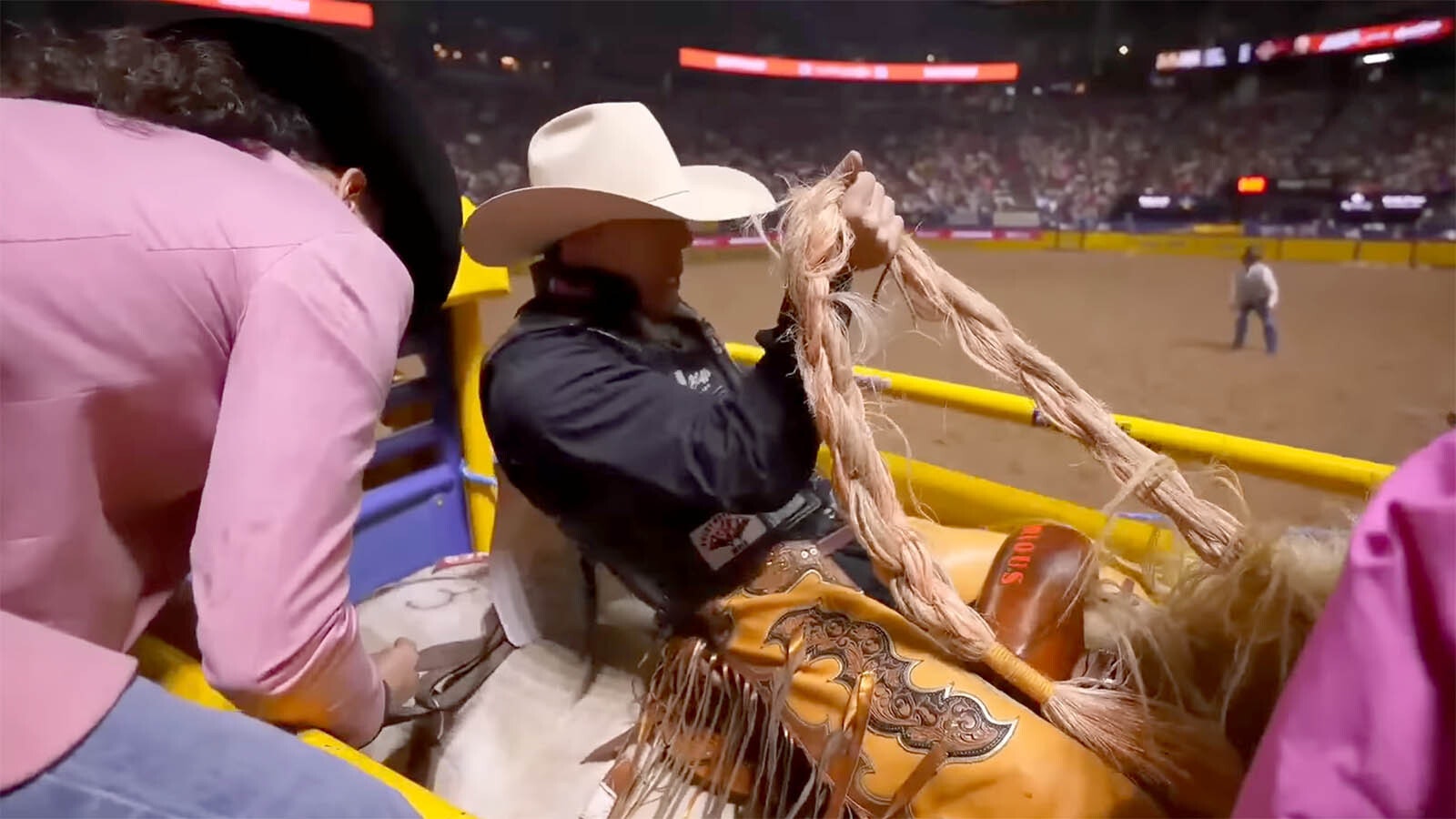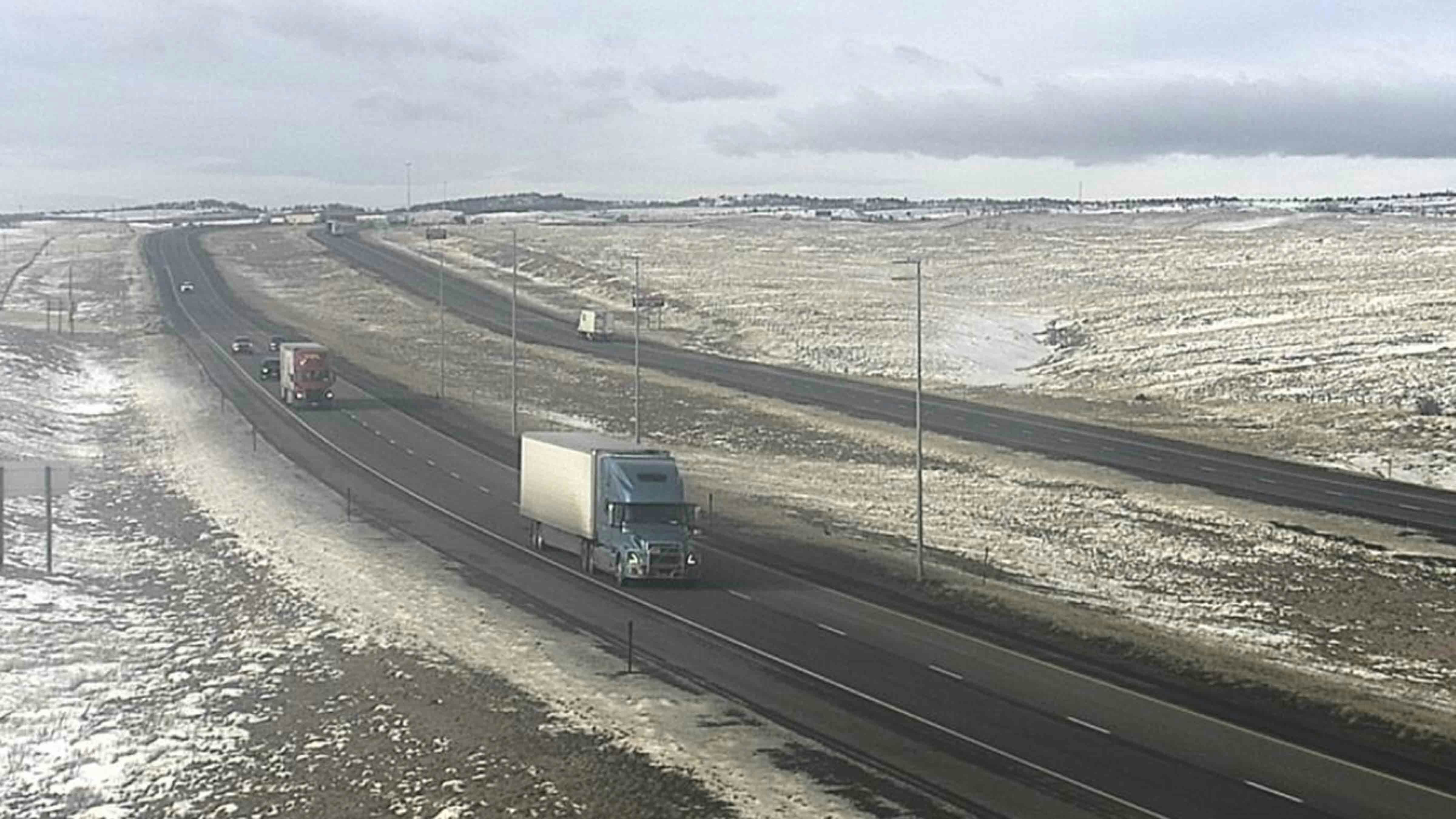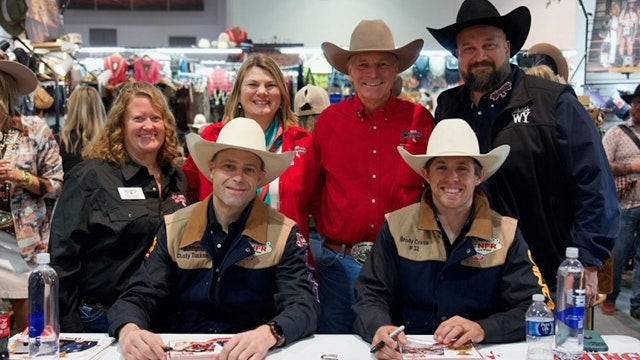You’re driving down the interstate in southeast Wyoming in June when you see a black armored vehicle that looks like something from a Mad Max movie.
It’s freak-out huge, 14,000 pounds of metal with a 360-degree turret on top, capable of speeds up to 90 mph.
Is this vehicle even street legal? Or has the space-time continuum to an apoplectic parallel universe been ripped open?
Nope, the angular black tank is indeed street legal, and the fabric of the universe is still intact — as the big, blocky letters on the side of this monster vehicle hint at. “Stormchasers.com,” it says in fading white letters.
This is the Tornado Intercept Vehicle 2 (TIV2), made famous by IMAX filmmaker Sean Casey’s 2009-2011 Discovery Channel series “Storm Chasers.”
As for what it’s doing in Wyoming, which borders the classic definition of Tornado Alley, it’s carrying on with storm-chasing legends under a new owner, Ryan Shepard, who lives in Colorado but visits Wyoming frequently.
Most recently, he had the TIV2 at Laramie County Community College to answer questions for some of the college’s STEM students.

Wyoming Is Good Tornado-Chasing Territory
Though Wyoming is not as well-known as states like Kansas for tornados, it actually does have some great locations for them in late May to early July, with June being the peak of such storm activity.
“The Cheyenne Ridge is one of our big areas,” Shepard told Cowboy State Daily during the community college’s recent GIS Day. “Up near Chugwater and Wheatland, sometimes around Cheyenne, and to Nebraska and northeast Colorado.”
Shepard drives the TIV2 all over the middle of Midwest-nowhere throughout tornado season.
He might be in Texas to the south and all the way to Wyoming in the north, depending on what GIS data and weather reports suggest will be optimal for tornado interception — as in sitting tight in the teeth of winds that can spin up to 250 mph.
“This is designed to get directly hit by a tornado,” Shepard said. “It’s armored with steel, aluminum, Kevlar, and polycarbonate — bulletproof glass."
TIV2 also has custom-engineered hydraulic flaps that drop down to earth and protect the underside of the vehicle, keeping wind from getting under and lifting it, as well as harpoon-tipped spikes that drill 2 feet into the ground on all four corners of the vehicle.
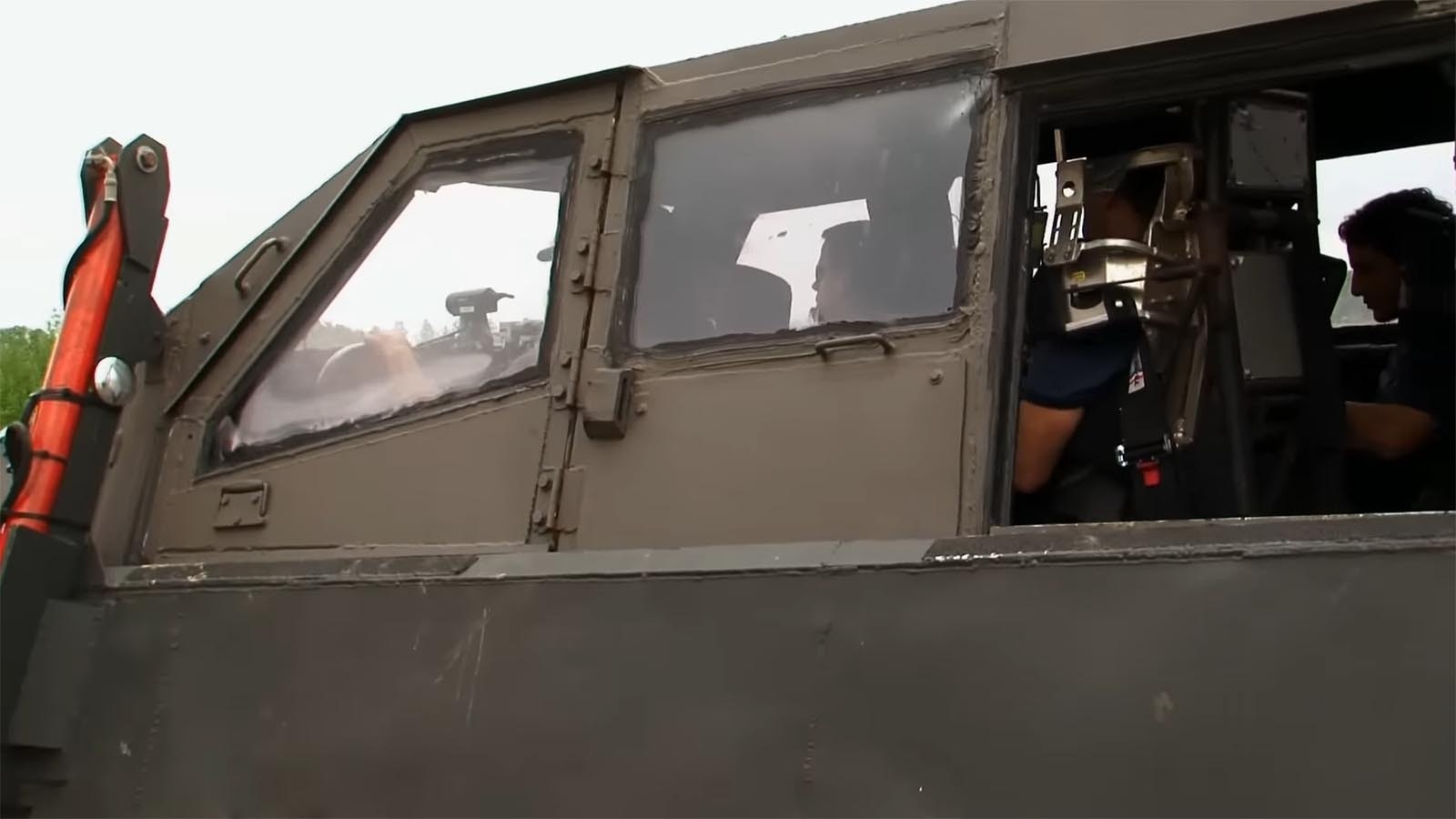
Riding The Storm Out
The hydraulic flaps and harpoon-tipped spikes are what make it possible for the TIV2 to ride not just the storms out, but tornados up to a category EF3.
“This has been in 20 tornadoes lifetime,” Shepard said. “The strongest one was an EF3-rated tornado, but it had EF4 wind.
"It probably couldn’t survive a high-end EF4, EF5, but any medium to weak tornadoes, we try to get them.”
TIV2 might be a huge hunk of metal, but it can feel pretty tiny inside when a tornado is bearing down. The sound is like a freight train running at full speed to the occupants inside.
That wind is definitely not a benign force, either.
It’s slinging everything it has at the vehicle. Buckets of water are sloshing across the window. Think car wash on steroids. But rocks, sticks — whatever is loose — are also clanking and clinking throughout the frenzied duration.
“It sounds like a tin can in there,” Shepard said. “Debris is a huge factor. We have to make sure there’s not like anything huge around, like semi-trucks or huge buildings or something.”
That typically means arriving ahead of the storm’s expected path to scout the location. A navigator typically sits in the turret during this storm race, to keep real-time tabs on where the storm is.
“We use weather models to get all of our data, to find out where we’re going to go to find the best environment for tornados and super cells,” Shepard said. “So that’s a lot of mapping and overlay data, and then we use our radar software to show us information, too, like terrain data, satellite radar, and road networks.”
Road networks are especially important.
“We’ve got to be able to keep up with the storm and stay out of its way coming at us,” Shepard said.
All of this data feeding into the TIV2 has a time delay.
That makes the navigator’s job particularly vital. Without that, the TIV2 is really flying blind, potentially, right into the mouth of a full-on tornado.
Trees Falling From The Sky
It takes just 22 seconds for Shepard and his team to deploy both the hydraulic flaps that shield the undersides of the TIV2 and its 2-foot-long harpoon-tipped spikes that drill into the earth.
Shepard knows that because he and his team have practiced the maneuver until they can do it blindfolded in their sleep with one hand tied behind their back.
It’s the most crucial step in the whole tornado intercept escapade. Without it, they will be caught in a tornado that can literally lift them up like Dorothy’s house in the Wizard of Oz and potentially sling them all the way back to Kansas like they’re Toto.
“We’ve had some close calls,” Shepard said. “But nothing that was really that life-threatening so far. We’ve come across a couple strong tornadoes and decided not to intercept because it was too risky. And then we’ve gotten in the path of a couple tornadoes at nighttime.”
Nighttime tornadoes are difficult to track unless there’s a lot of lightning.
“Radar is close to accurate, but it can still be a little off because it’s delayed by a few minutes,” Shepard said. “So, if there’s not enough lightning, you can’t tell where it’s at or how strong it is.”
If a tornado appears too strong for the TIV2, Shepard keeps his distance, watching from afar.
“We did that just last season in Greensburg, Kansas, that small town that got hit by the EF5,” he said. “It was almost a similar situation happening again. A large violent tornado was coming through. Thankfully, it just missed the town.”
Shepard and his team drove slowly along a road near the storm’s expected path, waiting for it to pass in front so they could watch it go by.
“It passed the road in front of us, and we came across the damage path,” he said. “You could see debris falling out of the sky, like pieces of trees.”
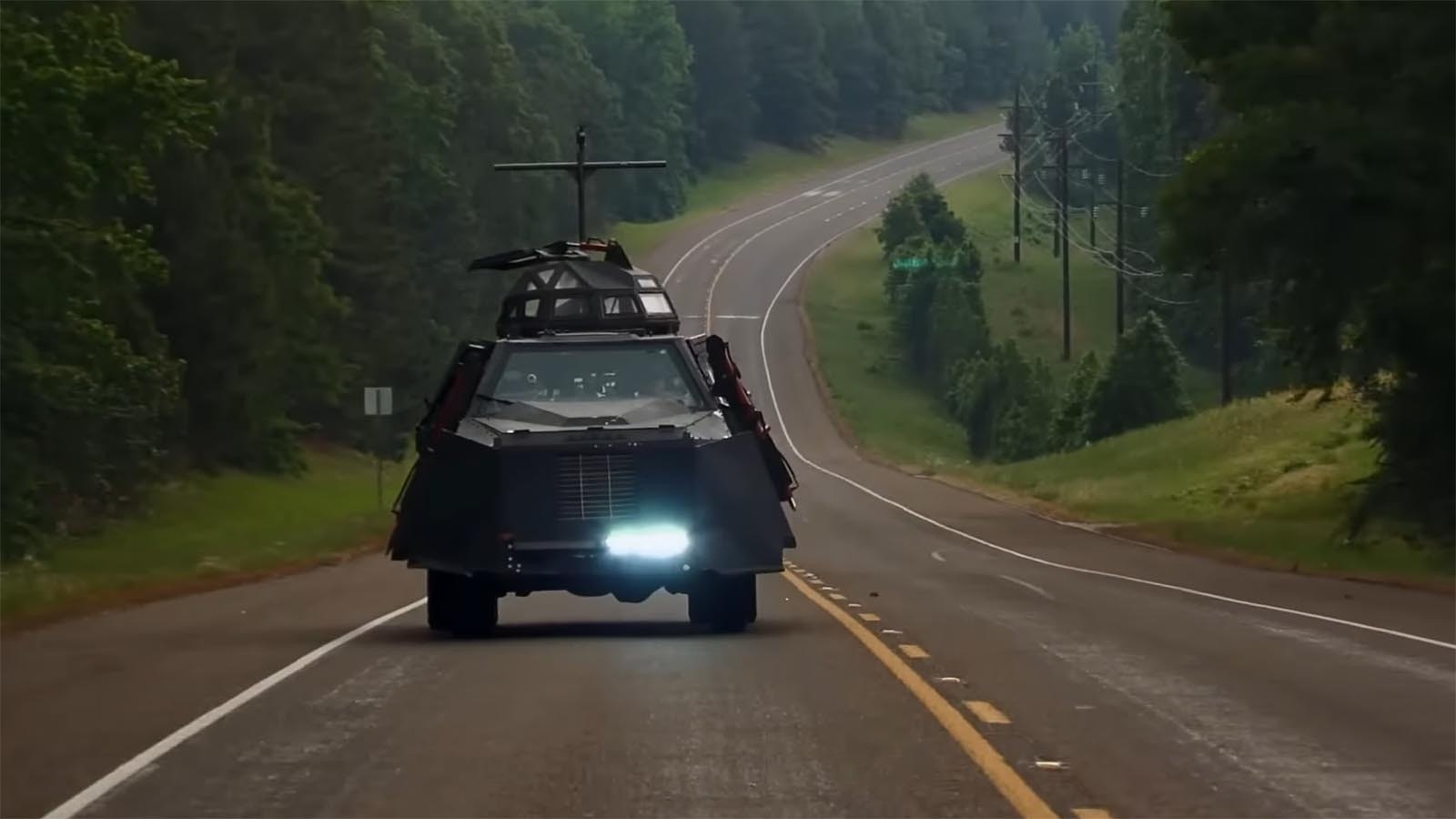
Beating Out Hollywood
Shepard was a one-time member of Casey’s crew when he was making the “Storm Chaser” series.
He lucked into buying the TIV2 just a few years ago, swooping in by chance and swiping it from Hollywood types who were offering a lot more for the iconic machine.
“There’s a lot of people who would kill to have this,” he said. “And we have a very good fan base who are all thrilled to see this out again.”
Casey had used the TIV2 for a time after the “Storm Chasers” run to promote his television series. After that, he parked it in a field and then never got back around to it.
“He’s primarily a filmmaker, not a full-time storm chaser,” Shepard said.
Shepard hadn’t even realized the TIV2 was for sale at the time.
He’d seen a news story about a scavenger hunt for its predecessor the TIV1, which Casey was giving away to whoever could figure out where Casey had it parked.
“I called him up to ask him what he was going to do with the TIV2,” Shepard said.
Casey told him he had just listed it for sale on Craigslist.
“He told me he had people in Hollywood willing to pay like $45,000 for it, but he’s like, ‘I can give it to you for $30,000 to keep it in storm chasing.’”
That was an offer Shepard couldn’t refuse. He knew it was a great deal, in spite of the poor condition the vehicle was in after years of disuse, sitting in a field.
“The frame was barely hanging on by like a weld, and the mice got to all the electronics,” Shepard said. “It was in bad, bad shape.”
But it had originally cost nearly a quarter million to build and today would cost closer to half a million in materials to replicate.

Scientific Angles
Casey built the TIV1 and TIV2 vehicles because chasing tornadoes in a van proved to be not only dangerous, but frustrating and cumbersome. He was forever breaking down his film gear right when the tornado was finally close enough for a spectacular shot.
What he needed was a vehicle that could stand its ground. Take the full onslaught of a tornado, so he could get the shots no other filmmaker could.
But TIV2 is more than just a crazy, Mad Max film studio for a filmmaker obsessed with getting the best shots. It was also involved in the largest tornado research project in history, the Vortex 2 project.
Scientific research is something Shepard hopes he can get the TIV2 involved in again, if and when funding is again available for such research.
“This has the capability of aiding all kinds of tornado research,” he said. “If any PhDs are looking for some sort of experiment to be done, we could help them out a lot. And we are just always trying to come up with ideas on different types of research.”
Meteorologist Don Day, who said he has yet to be inside a TIV2-like vehicle during a tornado, agreed that the data obtained by the TIV2 could be useful for science.
“There’s always data gathered in these situations, and we’ve learned a lot from storm chasers,” he said. “So there is a benefit.”
However, some storm chasers have pushed the boundaries of safety in pursuit of YouTube clicks, he added. For scientific purposes, data needs to be obtained in a more organized, less flashy manner, one not driven by social media popularity contests.
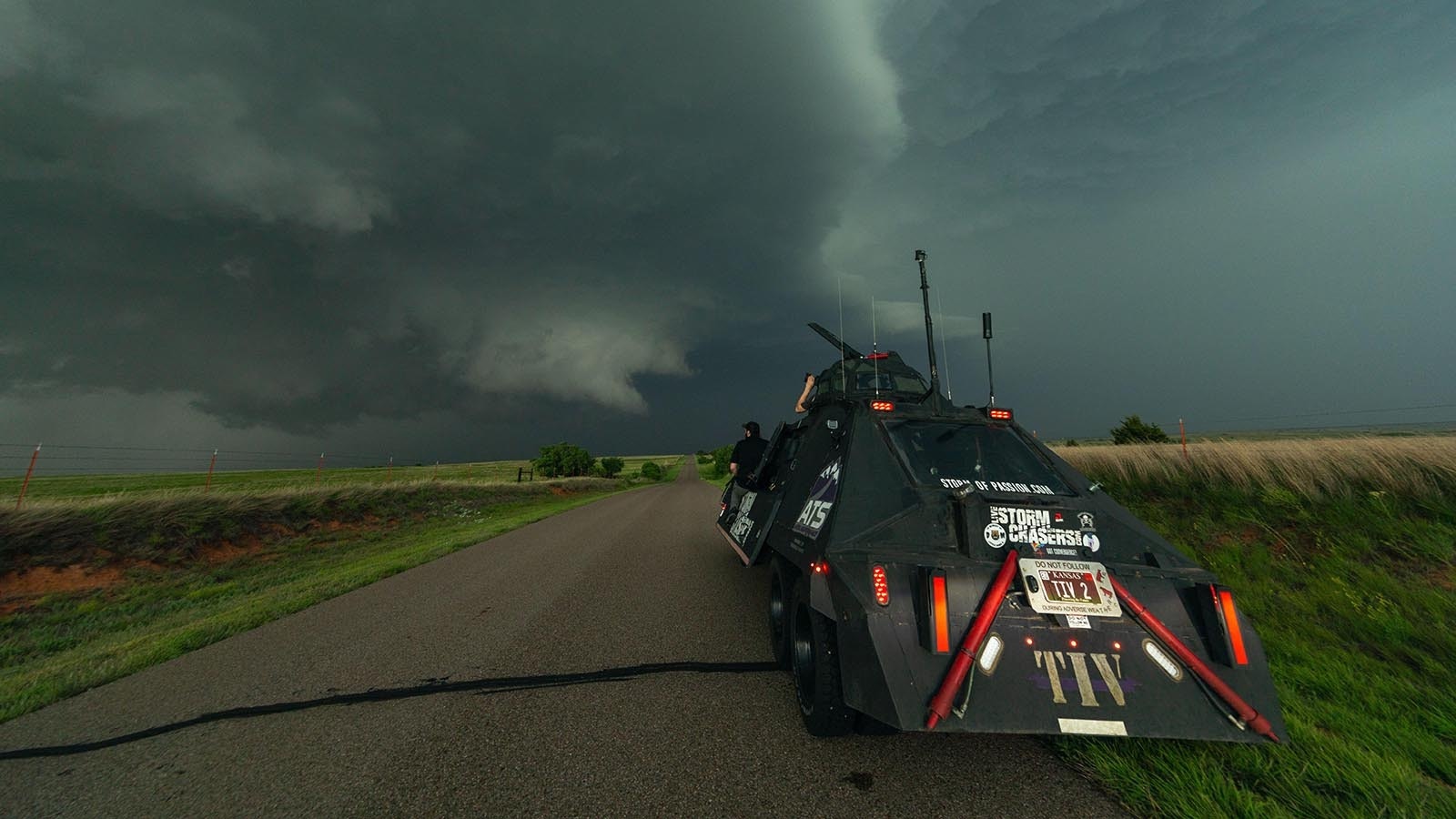
How About A TIV3?
Shepard said he’s hoping to work with universities in the future on that very kind of thing.
“Funding has kind of dwindled recently,” he said. “But hopefully in the future, we’re hoping we might have some luck with universities. We just haven’t done a lot of communication with them yet.”
For now, he’s satisfied to pursue his storm-chasing hobby as an educational nonprofit.
The TIV2 team is also always ready to lend a helping hand at any tornado scene where he and the TIV2 have gone, team member Ashlee Carson said.
“It’s a fun hobby, but there’s so much more to it when it comes to the safety of people,” she said. “And we’re usually the ones who are already there, usually first on the scene. So, a lot of our team members have their EMT certifications and stuff, in case something was to happen so they could start helping, at least until more help gets there.”
Cell phone towers are usually knocked out of commission during tornadoes, but the TIV2 is wired up with a radio, so it can still communicate with the world at large.
At some point, Shepard also hopes to build a third TIV vehicle.
“TIV2 is a homemade vehicle,” he said. “So, we’d like to do another one with a little better design. Something a little better looking, professionally made, with maybe air conditioning this time and heat.”
Renée Jean can be reached at renee@cowboystatedaily.com.



